Plot summary
The Swoop! tells of the simultaneous invasion of England by several armies – "England was not merely beneath the heel of the invader. It was beneath the heels of nine invaders. There was barely standing-room." [2] – and features references to many well-known figures of the day, among them the politician Herbert Gladstone, novelist Edgar Wallace, actor-managers Seymour Hicks and George Edwardes, and boxer Bob Fitzsimmons.
The invaders are the Russians under Grand Duke Vodkakoff, the Germans under Prince Otto of Saxe-Pfennig – the reigning British monarch of the day was Edward VII of the House of Saxe-Coburg-Gotha – the Swiss Navy, the Monegasques, a band of Moroccan brigands under Raisuli, the Young Turks, the Mad Mullah from Somaliland, the Chinese under Prince Ping Pong Pang, and the Bollygollans in war canoes.
The initial reaction to the invasion is muted. "It was inevitable, in the height of the Silly Season, that such a topic as the simultaneous invasion of Great Britain by nine foreign powers should be seized upon by the press", [2] but the English are far more interested in cricket and one newspaper placard announces "Surrey Doing Badly" (at cricket), ahead of "German Army Lands in England". [3] And when the Germans begin shelling London – "Fortunately it was August, and there was nobody in town." [4] – the destruction of nearly all the capital's statues, the reduction of the Albert Hall to a heap of picturesque ruins, and the burning of the Royal Academy, earn Prince Otto a hearty vote of thanks from the grateful populace. [5]
The European parties form an alliance and expel the other invaders, but the Swiss soon leave, to be home in time for the winter hotel season, and when Prince Otto and Grand Duke Vodkakoff are offered music hall engagements and the leader of the army of Monaco is not, he takes offence and withdraws his troops.
The two remaining armies are overcome thanks to the stratagems of the indomitable Clarence Chugwater, leader of the Boy Scouts. By causing each commander to become jealous of the other's music hall fees, he succeeds in breaking up the alliance and, in the ensuing chaos, Clarence and his Boy Scouts are able to overcome the invaders.
In The Military Invasion of America, the United States is invaded by armies from Germany, under Prince Otto of Saxe-Pfennig, and Japan, led by General Owoki. Once again it is Clarence Chugwater who saves the day.
Major themes
The Swoop! is a comical satire on the then-popular genre of invasion literature. Six years before The Swoop, Wodehouse (under the pseudonym Henry William-Jones) contributed a humorous article to Punch magazine in which he outlined, in a mock-serious tone, the plot of an "Inspired-Prophecy kind of novel, in which England is overrun by invaders until the last few chapters". ( William-Jones 1903 ) While it differs in many details from the earlier outline, The Swoop was that novel.
In writing The Swoop, Wodehouse was responding to an upsurge in the popularity of the invasion genre: 1909 marked "the year of greatest suppuration" ( Eby 1988 , p. 75) of the genre. William Le Queux's The Invasion of 1910 had been serialised in the Daily Mail and was a best-seller, while Guy du Maurier's play, An Englishman's Home , which had opened at Wyndham's Theatre on 27 January, was a theatrical sensation, playing in three London theatres simultaneously. ( Eby 1988 , p. 75)
Many writers of invasion-scare stories took as their starting point an assumed unpreparedness on the part of Britain's armed forces to counter the threat of invasion, and they wrote with the aim of raising public awareness of this deficiency. Du Maurier, for example, was a serving army officer ( Clarke 1997 , p. 17) while Le Queux was assisted by Field Marshal Earl Roberts, who had resigned from active duty a few years earlier to devote himself to the National Service League, which promoted universal military training. ( Green 1981 , p. 45) For these, and similar, writers, Britain's safety depended on building up its armed forces. Du Maurier's play was described in the Annual Register as "a forcible and cleverly-written argument in favour of universal military training". (quoted in Clarke 1997 , p. 18)
Wodehouse "transforms the established pattern by reversing all expectations". ( Clarke 1997 , p. 19) Not only is Britain unprepared for invasion, the public shows a complete disregard for the invasion – except as a source of entertainment. And the invading armies are defeated not by the might of Britain's military, but by the cunning stratagems of an unknown "Man of Destiny", the 14-year-old Clarence Chugwater, assisted by his band of Boy Scouts. "Wodehouse concocted a preposterous plot which, unlike his models, was preposterous by intent." ( Eby 1988 , p. 76)

Sir Pelham Grenville Wodehouse, was an English writer and one of the most widely read humorists of the 20th century. His creations include the feather-brained Bertie Wooster and his sagacious valet, Jeeves; the immaculate and loquacious Psmith; Lord Emsworth and the Blandings Castle set; the Oldest Member, with stories about golf; and Mr. Mulliner, with tall tales on subjects ranging from bibulous bishops to megalomaniac movie moguls.

Prince Frederick, Duke of York and Albany was the second son of George III, King of the United Kingdom and Hanover, and his consort Charlotte of Mecklenburg-Strelitz. A soldier by profession, from 1764 to 1803 he was Prince-Bishop of Osnabrück in the Holy Roman Empire. From the death of his father in 1820 until his own death in 1827, he was the heir presumptive to his elder brother, George IV, in both the United Kingdom of Great Britain and Ireland and the Kingdom of Hanover.

Mary Anne Clarke was the mistress of Prince Frederick, Duke of York and Albany. Their relationship began in 1803, while he was Commander-in-Chief of the army. Later in 1809, she wrote her memoirs which were published. She was the subject of a portrait by Adam Buck, and a caricature by Isaac Cruikshank; ten days after the latter's publication, the Duke resigned from his post as Commander of the British Army. In 1811, she commissioned Irish sculptor Lawrence Gahagan to sculpt a marble bust of her; this is now housed in the National Portrait Gallery, London.

William Tufnell Le Queux was an Anglo-French journalist and writer. He was also a diplomat, a traveller, a flying buff who officiated at the first British air meeting at Doncaster in 1909, and a wireless pioneer who broadcast music from his own station long before radio was generally available; his claims regarding his own abilities and exploits, however, were usually exaggerated. His best-known works are the anti-French and anti-Russian invasion fantasy The Great War in England in 1897 (1894) and the anti-German invasion fantasy The Invasion of 1910 (1906), the latter becoming a bestseller.

The bazooka is a brass musical instrument several feet in length which incorporates telescopic tubing like the trombone. Radio comedian Bob Burns is credited with inventing the instrument in the 1910s, and popularized it in the 1930s. It was also played by jazz musicians Noon Johnson and Sanford Kendrick.
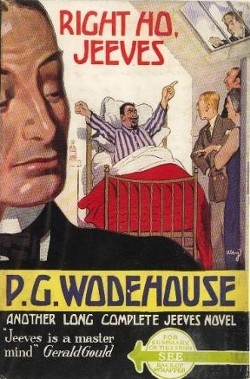
Right Ho, Jeeves is a novel by P. G. Wodehouse, the second full-length novel featuring the popular characters Jeeves and Bertie Wooster, after Thank You, Jeeves. It was first published in the United Kingdom on 5 October 1934 by Herbert Jenkins, London, and in the United States on 15 October 1934 by Little, Brown and Company, Boston, under the title Brinkley Manor. It had also been sold to the Saturday Evening Post, in which it appeared in serial form from 23 December 1933 to 27 January 1934, and in England in the Grand Magazine from April to September 1934. Wodehouse had already started planning this sequel while working on Thank You, Jeeves.

Bremen-Verden, formally the Duchies of Bremen and Verden, were two territories and immediate fiefs of the Holy Roman Empire, which emerged and gained imperial immediacy in 1180. By their original constitution they were prince-bishoprics of the Archdiocese of Bremen and Bishopric of Verden.

A Generaloberst was the second-highest general officer rank in the German Reichswehr and Wehrmacht, the Austro-Hungarian Common Army, the East German National People's Army and in their respective police services. The rank was equal to a four-star full general but below a general field marshal. The rank was equivalent to a Generaladmiral in the Kriegsmarine until 1945 or to a Flottenadmiral in the Volksmarine until 1990. It was the highest ordinary military rank and the highest military rank awarded in peacetime; the higher rank of general field marshal was awarded only in wartime by the head of state. In general, a Generaloberst had the same privileges as a general field marshal.
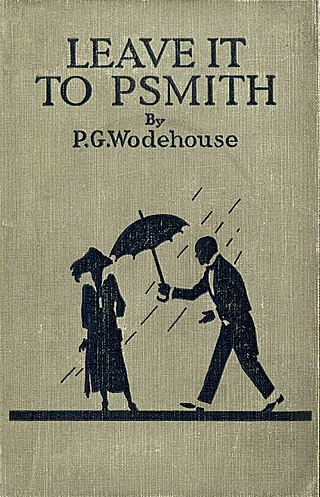
Leave It to Psmith is a comic novel by English author P. G. Wodehouse, first published in the United Kingdom on 30 November 1923 by Herbert Jenkins, London, England, and in the United States on 14 March 1924 by George H. Doran, New York. It had previously been serialised, in the Saturday Evening Post in the US between 3 February and 24 March 1923, and in the Grand Magazine in the UK between April and December that year; the ending of this magazine version was rewritten for the book form.

The Duchy of Saxe-Lauenburg, was a reichsfrei duchy that existed from 1296 to 1803 and again from 1814 to 1876 in the extreme southeast region of what is now Schleswig-Holstein. Its territorial center was in the modern district of Herzogtum Lauenburg and originally its eponymous capital was Lauenburg upon Elbe, though the capital moved to Ratzeburg in 1619.

The Electorate of Hanover was an electorate of the Holy Roman Empire, located in northwestern Germany and taking its name from the capital city of Hanover. It was formally known as the Electorate of Brunswick-Lüneburg. For most of its existence, the electorate was ruled in personal union with Great Britain and Ireland following the Hanoverian Succession.

Invasion literature is a literary genre that was popular in the period between 1871 and the First World War (1914–1918). The invasion novel was first recognised as a literary genre in the UK, with the novella The Battle of Dorking: Reminiscences of a Volunteer (1871), an account of a German invasion of England, which, in the Western world, aroused the national imaginations and anxieties about hypothetical invasions by foreign powers; by 1914 the genre of invasion literature comprised more than 400 novels and stories.

The Great War in England in 1897 was written by William Le Queux and published in 1894.
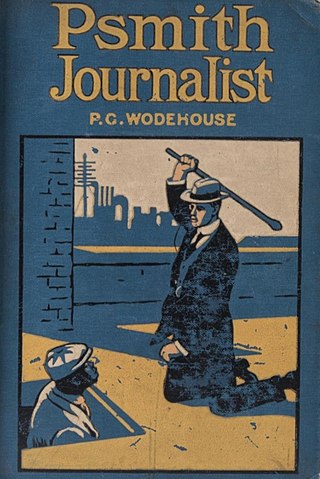
Psmith, Journalist is a novel by P. G. Wodehouse, first released in the United Kingdom as a serial in The Captain magazine between October 1909 and February 1910, and published in book form in the UK on 29 September 1915, by Adam & Charles Black, London, and, from imported sheets, by Macmillan, New York, later that year.
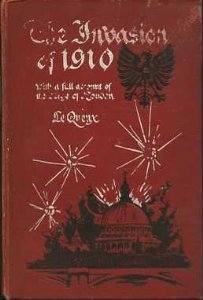
The Invasion of 1910 is a 1906 novel written mainly by William Le Queux. It is one of the most famous examples of invasion literature. It is viewed by some as an example of pre-World War I Germanophobia. It can also be viewed as prescient, as it preached the need to prepare for war with Germany.
The term invasion of England may refer to the following planned or actual invasions of what is now modern England, successful or otherwise.
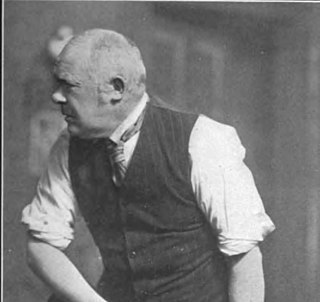
An Englishman's Home is a threat-of-invasion play by Guy du Maurier, first produced in 1909. The title is a reference to the expression "an Englishman's home is his castle".
Events in the year 1914 in Germany.

Imperial German plans for the invasion of the United Kingdom were first conceived in 1897 by Admiral Eduard von Knorr, commander of the Imperial German Navy, against a background of increasing Anglo-German rivalry and German naval expansion. Acknowledging the inferiority of the small German fleet, his concept called for a preemptive strike against the Royal Navy to establish temporary naval supremacy. This would be followed by an immediate landing, before British naval reinforcements re-established command of the sea. Subsequent studies determined that the shortest possible sea-crossing would be a prerequisite for success, requiring the use of port facilities seized in Belgium and the Netherlands to embark the expeditionary force. Reconnaissance of the English east coast was completed and potential landing sites in East Anglia were selected.

















